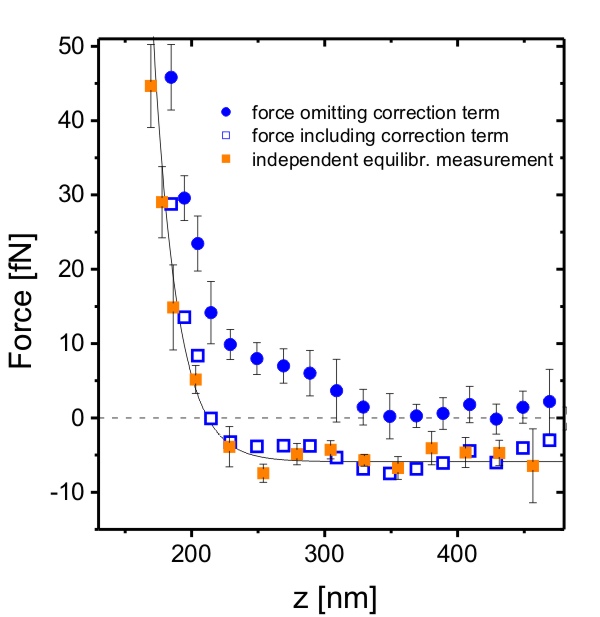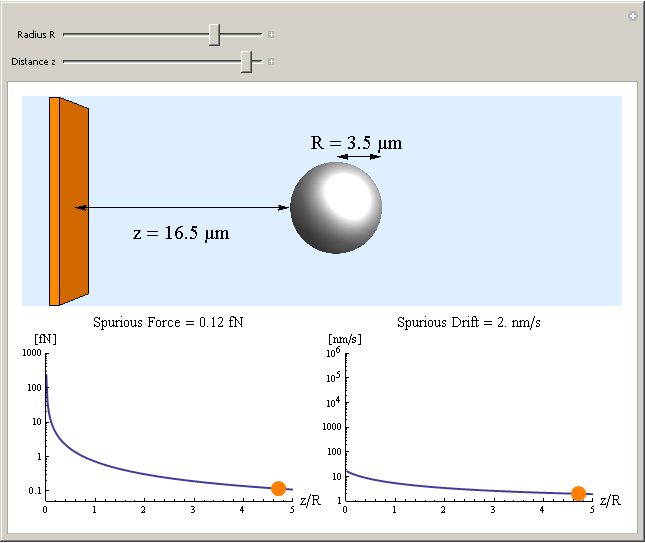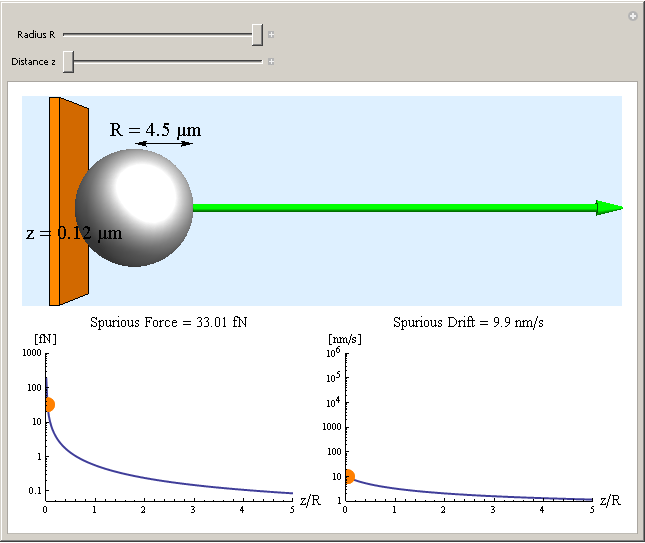Influence of Noise

Apart from the technological challenge intrinsic to dealing with forces in the order of femto Newton, it is important to realize that the general concepts we apply in our everyday life cannot be simply scaled down to microscopic objects, mainly due to the presence of thermal noise affecting the motion of small objects (Brownian motion).
For microscopic objects immersed in a liquid, viscous forces prevail by several orders of magnitude over inertial effects, i.e. they are overdamped. This implicates that a constant force F leads to a constant terminal drift velocity v, so that v = F/γ with γ the friction coefficient. However, things are complicated by the presence of Brownian noise. Indeed, the presence of a spatially varying Brownian noise leads to the presence of spurious forces, i.e. forces that exist only due to and in the presence of thermal noise. If overlooked, this leads to erroneous forces, which may severely affect the physical interpretations of experimental data.
Spurious Force Applet
The link below leads to a Mathematica demonstration focusing on a paradigmatic case of a Brownian particle in front of a wall. The user can explore the dependence of the spurious force term and the associated spurious drift on the particle radius and distance from the wall in water as medium. The correction terms become more relevant for smaller distances and radii. While the spurious drift reaches a constant value for z=0, the spurious force diverges. For high values the spurious force is indicated by a green arrow. Note that in contrast to the spurious drift, the spurious force only depends on the particle radius and not on the viscosity of the medium.


| Novel perspectives for the application of total internal reflection microscopy |
| G. Volpe, T. Brettschneider, L. Helden, C. Bechinger Opt. Express 17, 23975 (2009) |
